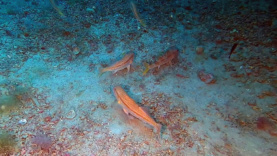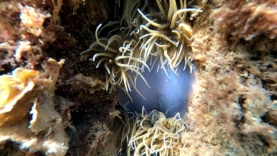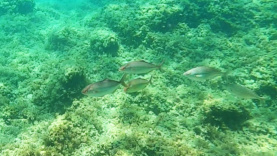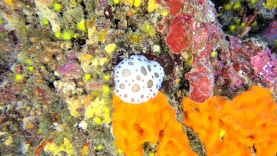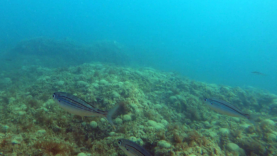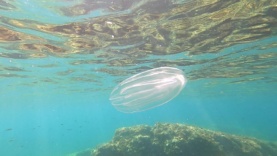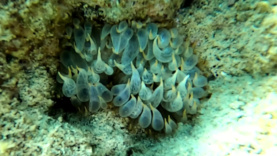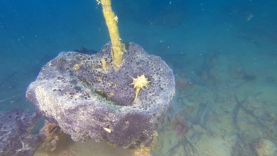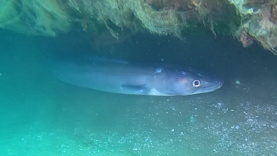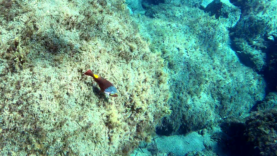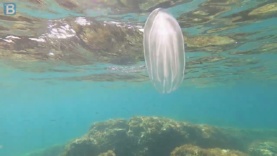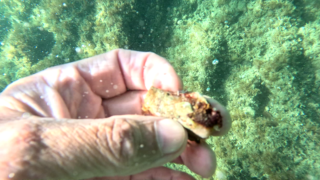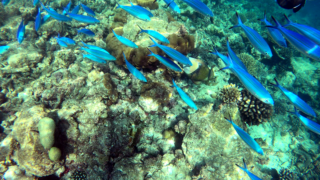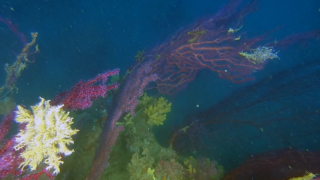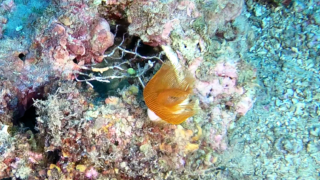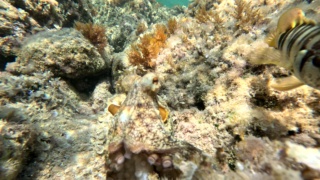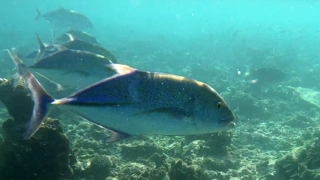Warty comb jelly Sea walnut - Mnemiopsis leidyi
In this video
Also this year we met the Mnemiopsis leidyi, Warty comb jelly – Sea walnut. Fortunately, we have seen only a few of them, so at least for now there hasn’t been the invasion of Mnemiopsis leidyi that we witnessed a few years ago.
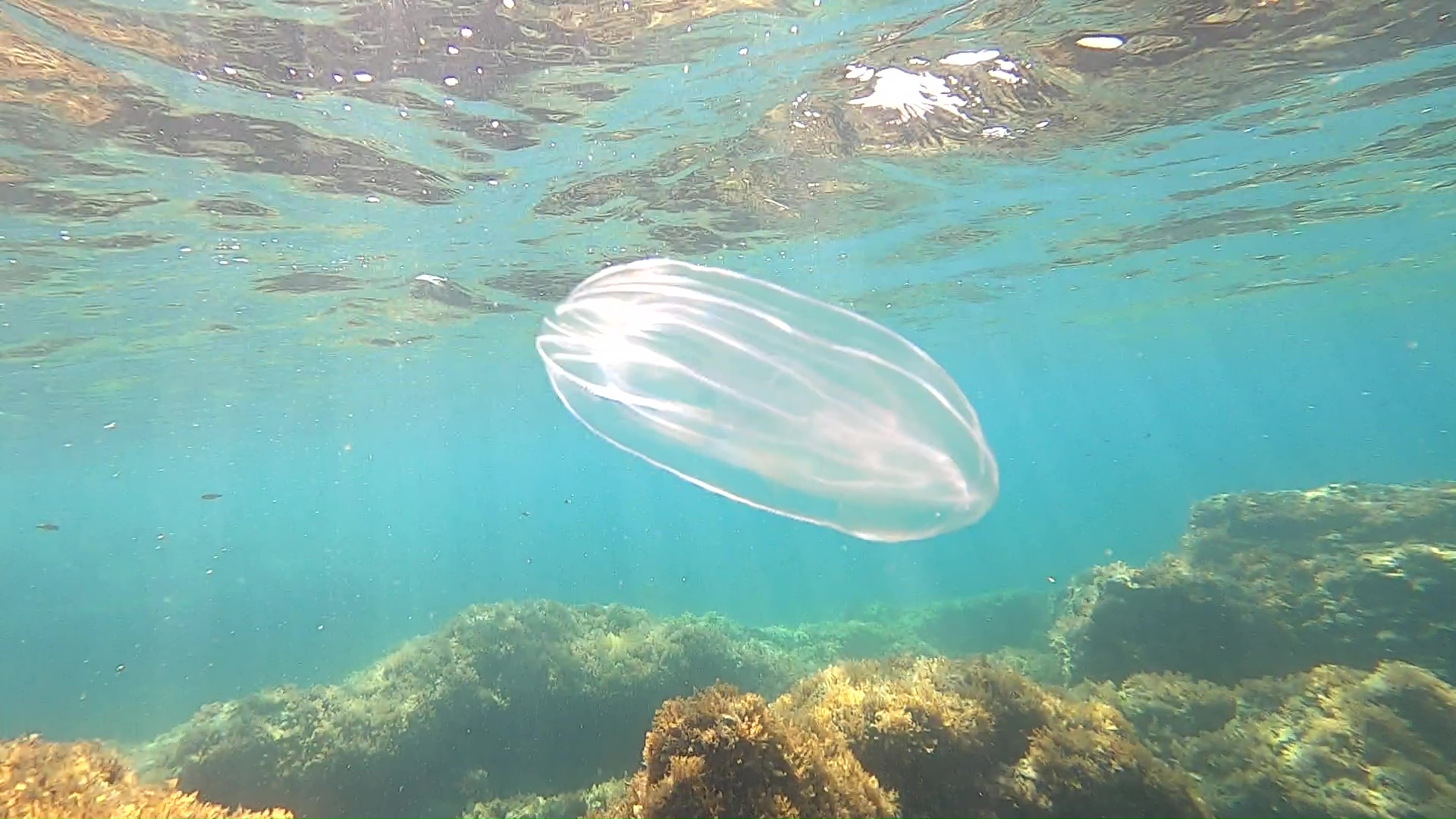
Remember that Mnemiopsis leidyi is one of the many alien species of the Mediterranean Sea and that it is not a jellyfish!
Mnemiopsis leidyi is a ctenophore belonging to the Bolinopsidae family, it is mistaken by many for a jellyfish due to its conformation and its transparency, but in reality it is a carnivorous animal that feeds on zooplankton, including crustaceans and other ctenophores, as well as larvae and fish eggs.
Its excessive proliferation highlights a sea that in that stretch of coast is certainly “sick” in fact Mnemiopsis leidyi develops in degraded environments, in this case from abnormal marine heating, but can easily develop in eutrophic environments due to excessive use of fertilizers and pesticides in agriculture which then pour into the sea or into oxygen-poor waters due to human activities or even in brackish waters such as those of river estuaries.
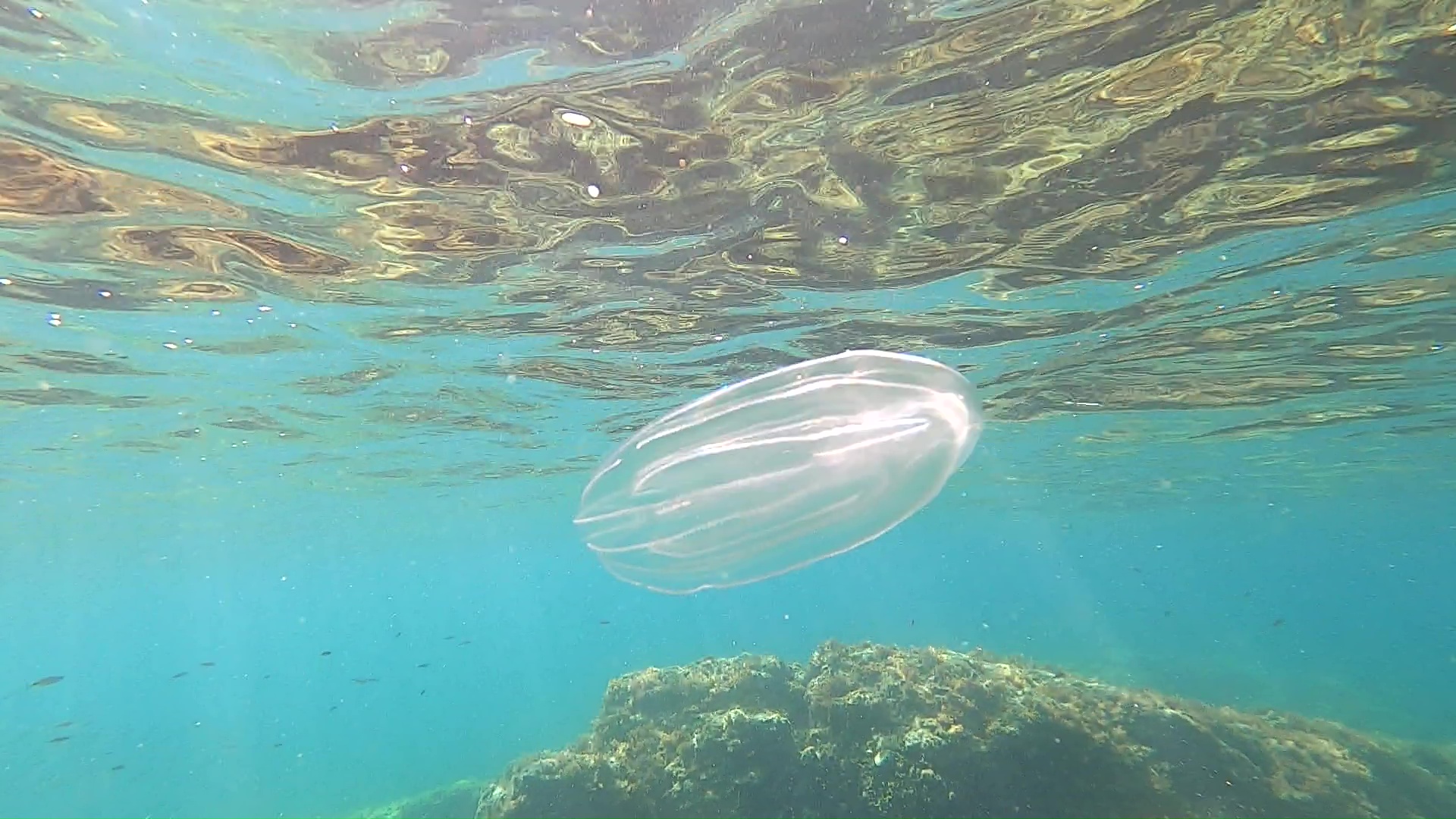
Mnemiopsis leidyi is to be considered an alien species. Sea nut (Mnemiopsis leidyi A. Agassiz, 1865) is a ctenophore belonging to the Bolinopsidae family. It is a species native to the Atlantic introduced with ballast water from tankers in the Black Sea, the Baltic and the Caspian. Over time it has also colonized other seas until it reached the entire Mediterranean Sea.
Mnemiopsis has been included in the list of 100 of the most harmful invasive species in the world.
The damage is due to its prolificacy and its zooplankton-based diet. It has been calculated, for example, that its presence is at the origin of the 80% decline in zooplankton in the Caspian Sea. Its introduction into the Black Sea had strong repercussions on the environment and economy.
In other seas its impact was important, albeit minor, probably due to the presence of predators or other planktophages. The harmfulness derives from the consequences of its development (it adapts very easily to new environments, bearing large variations in temperature), since the decrease in zooplankton directly or indirectly reduces local fish populations.
https://it.wikipedia.org/wiki/Mnemiopsis_leidyi
https://en.wikipedia.org/wiki/Mnemiopsis
Gallery

